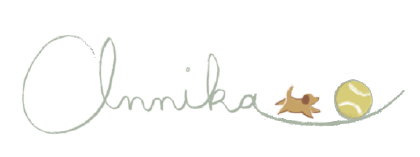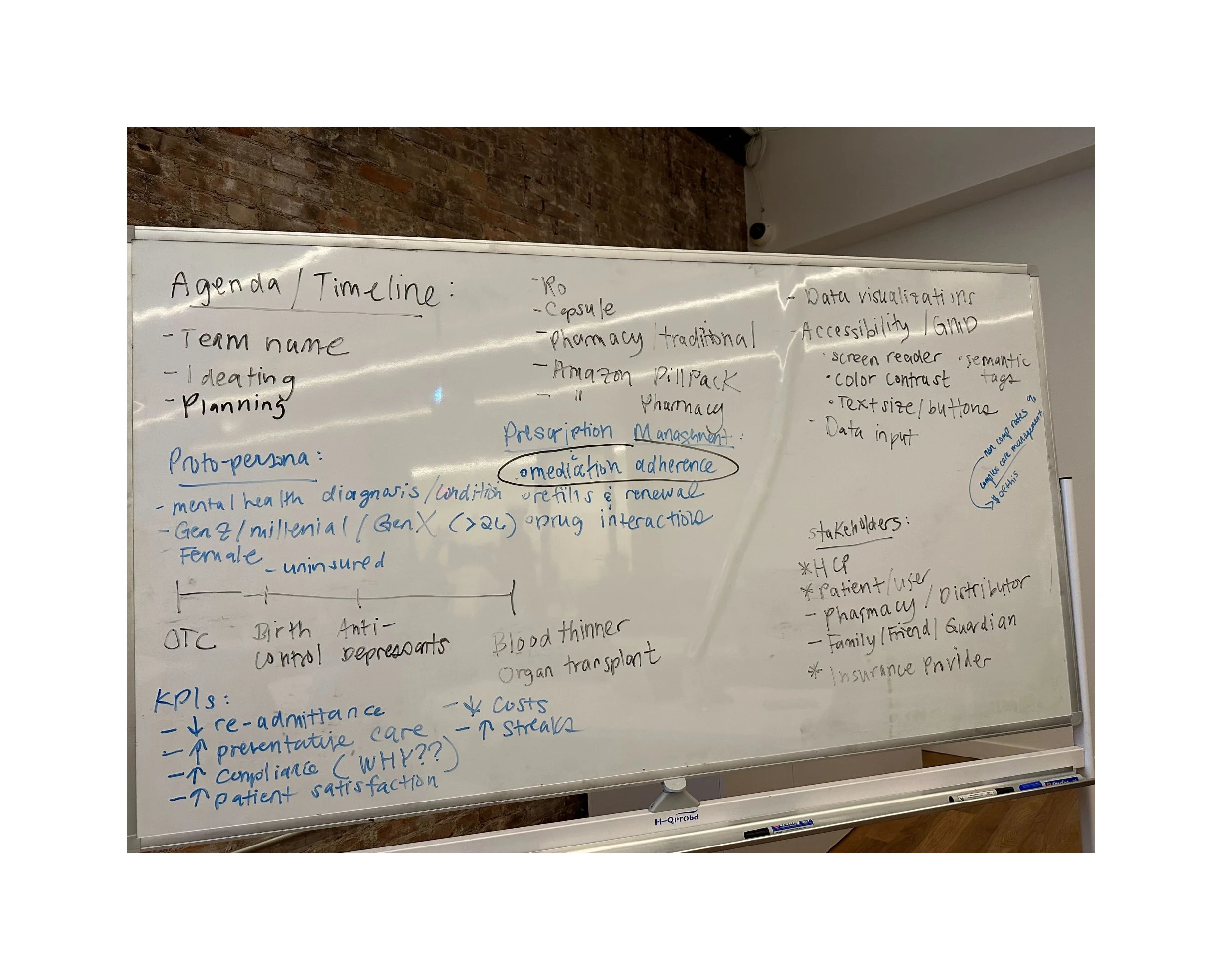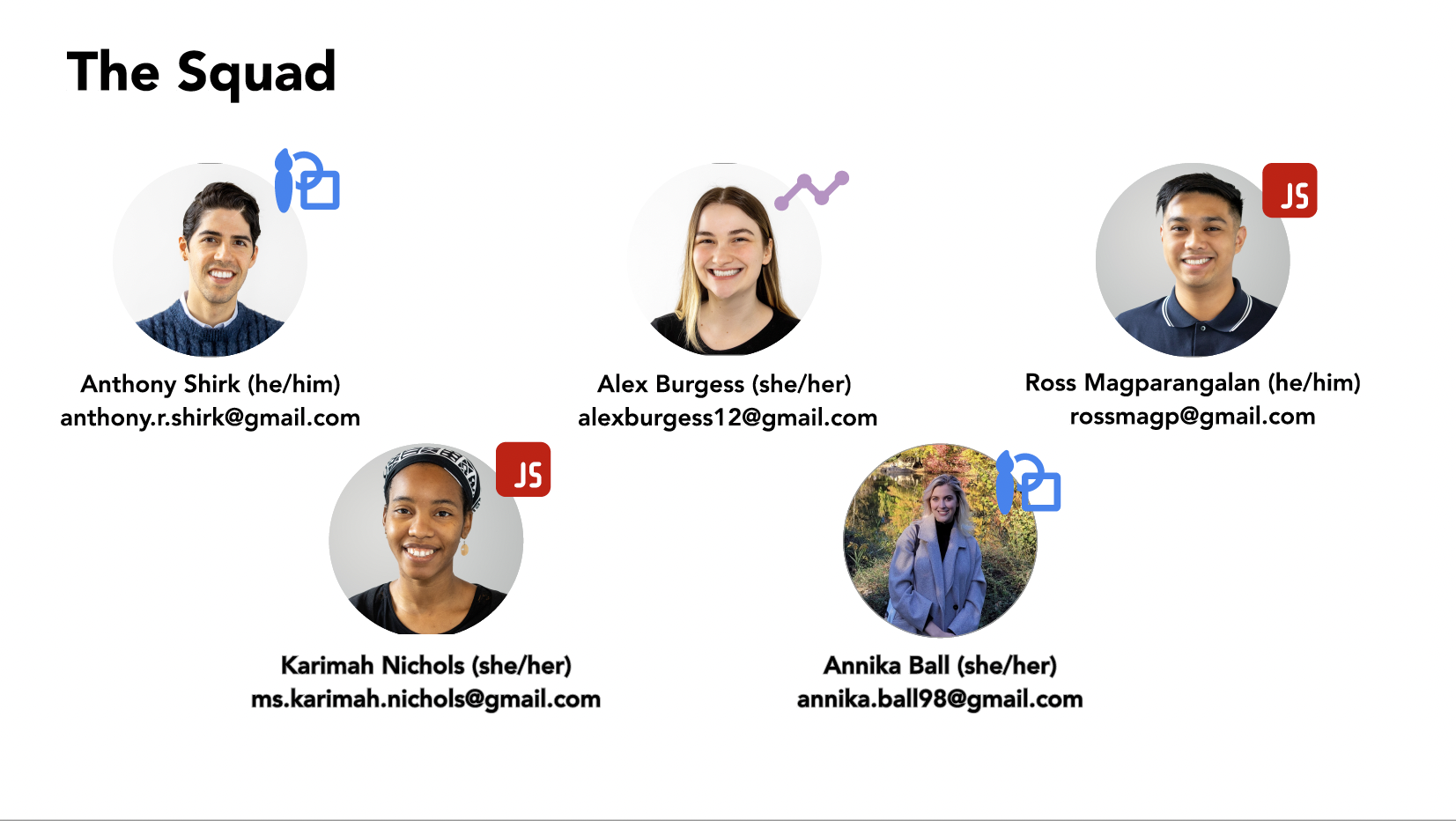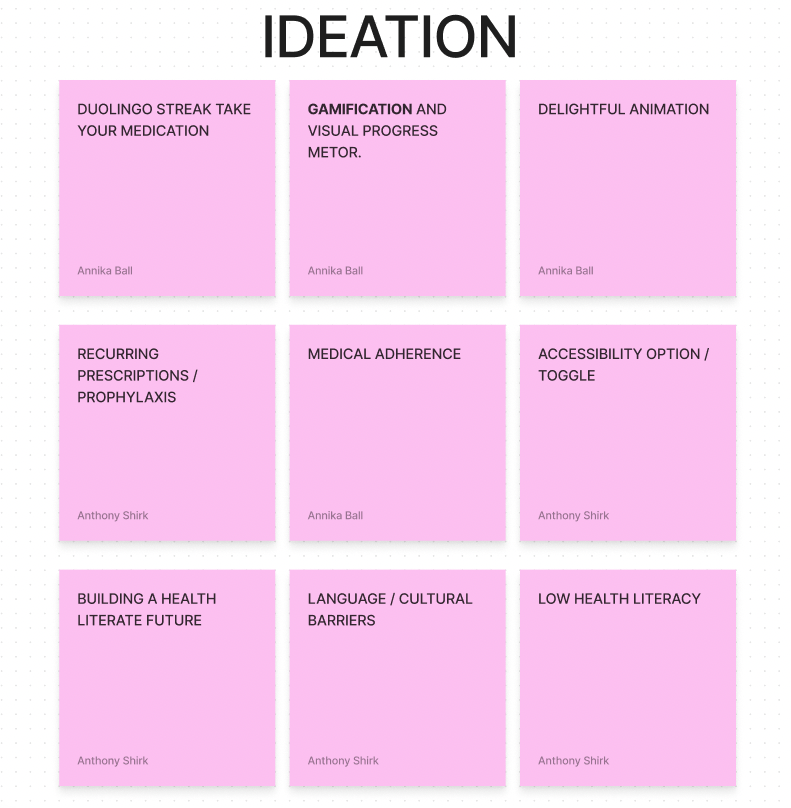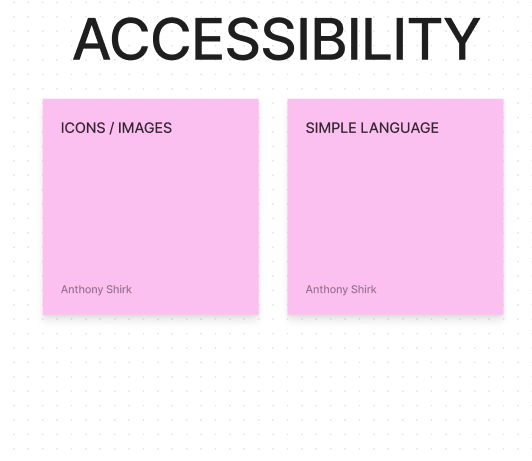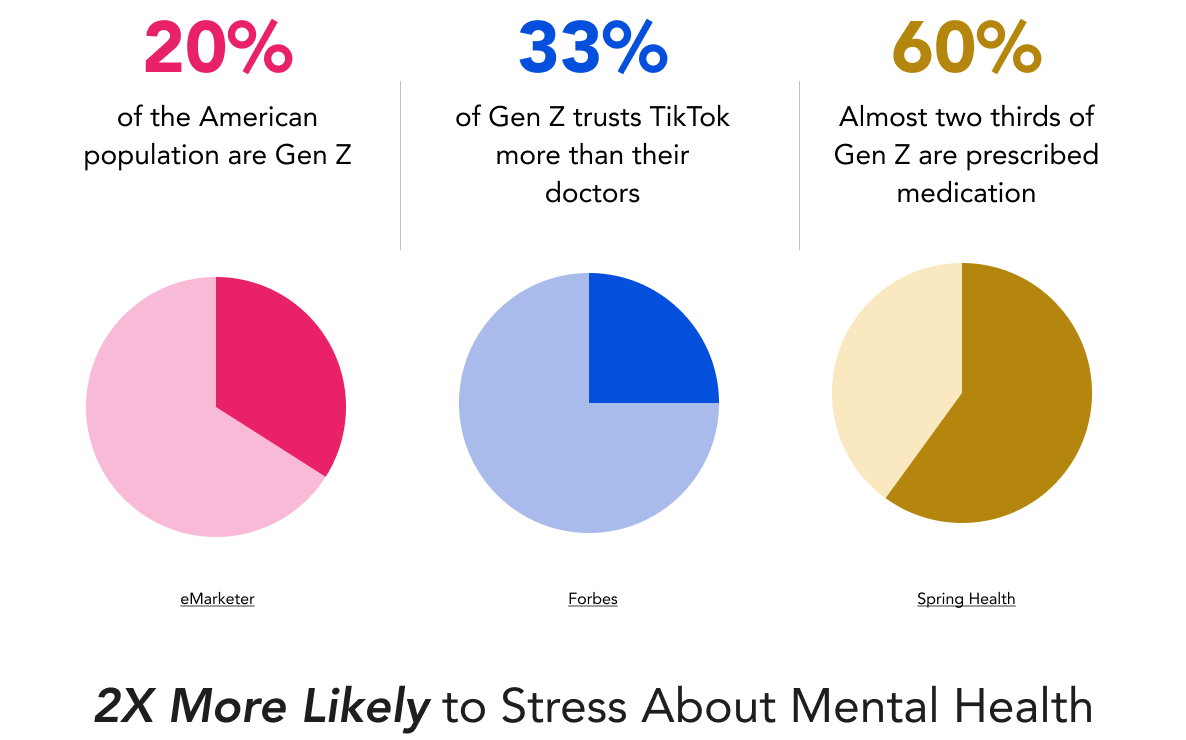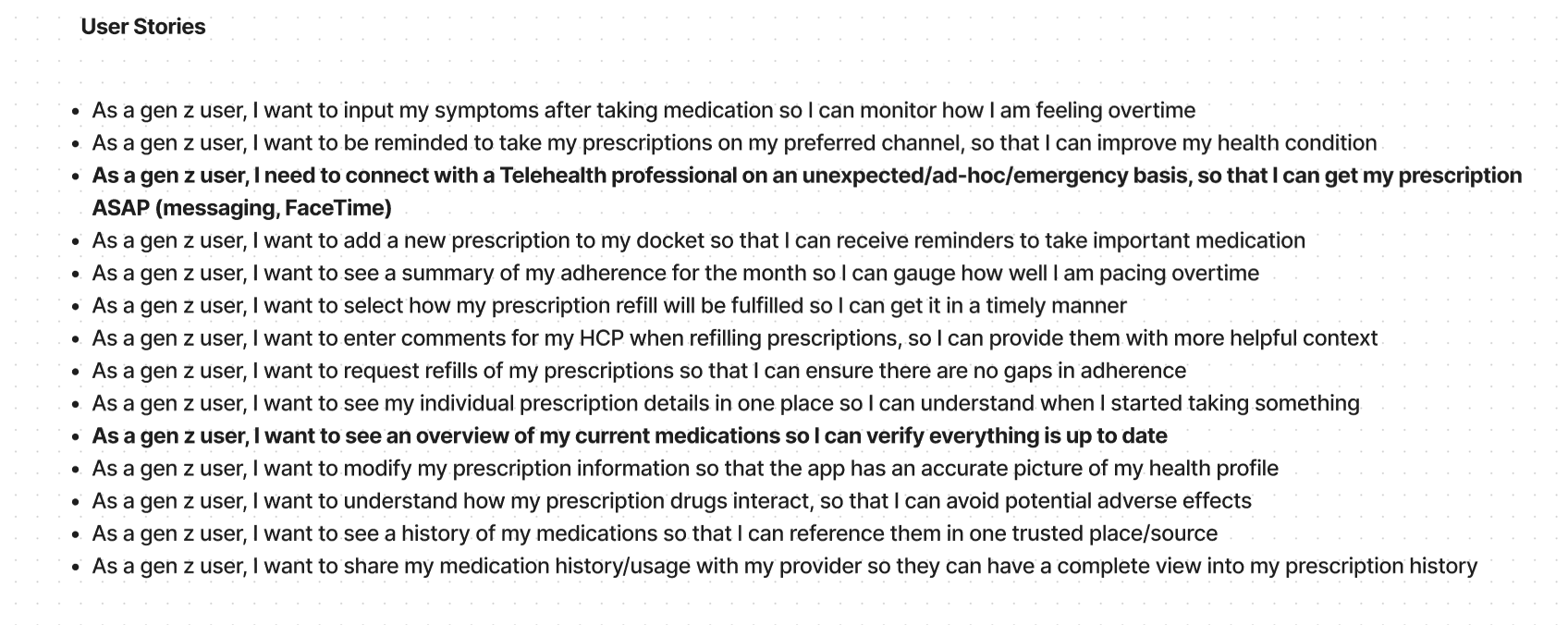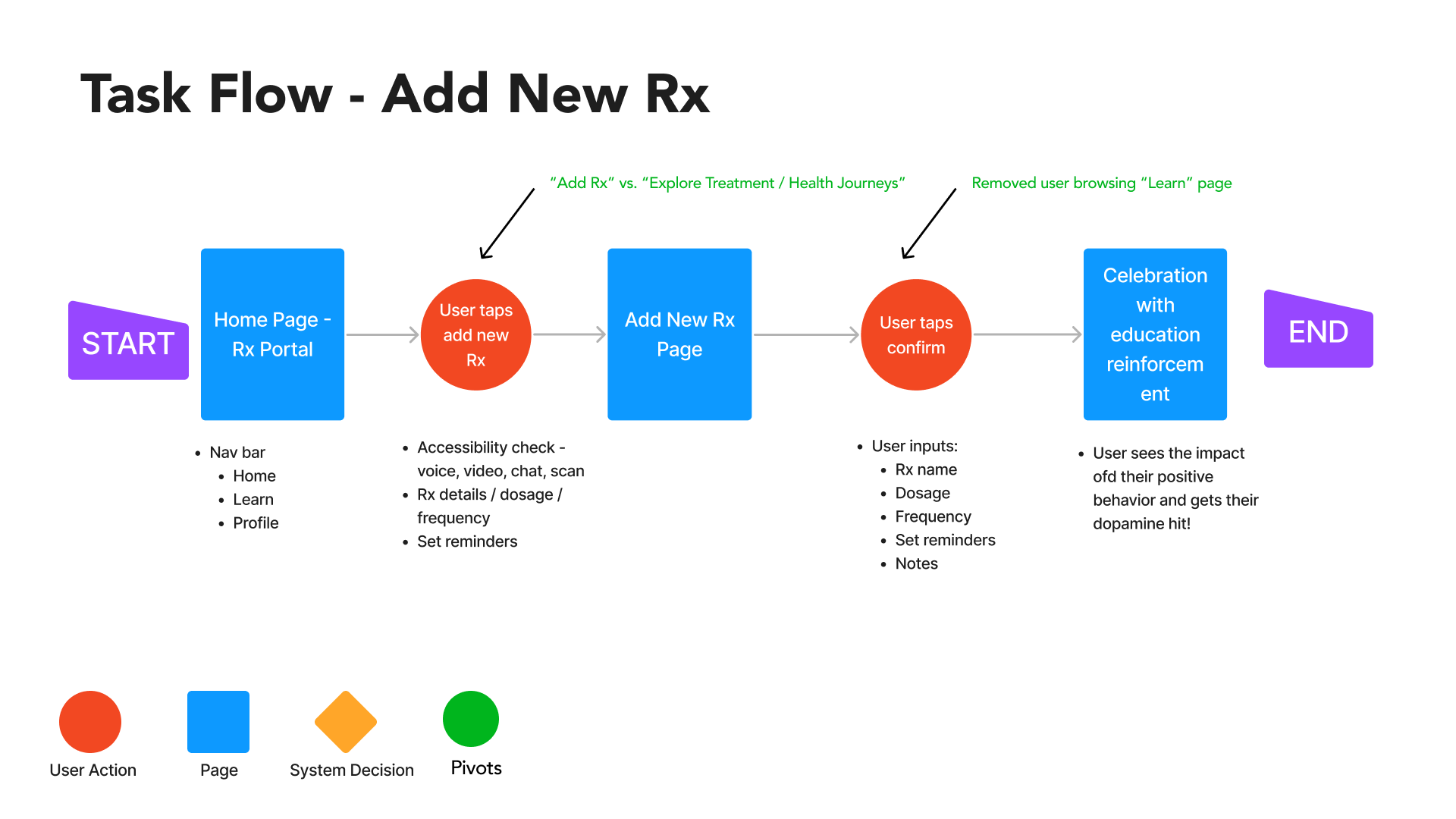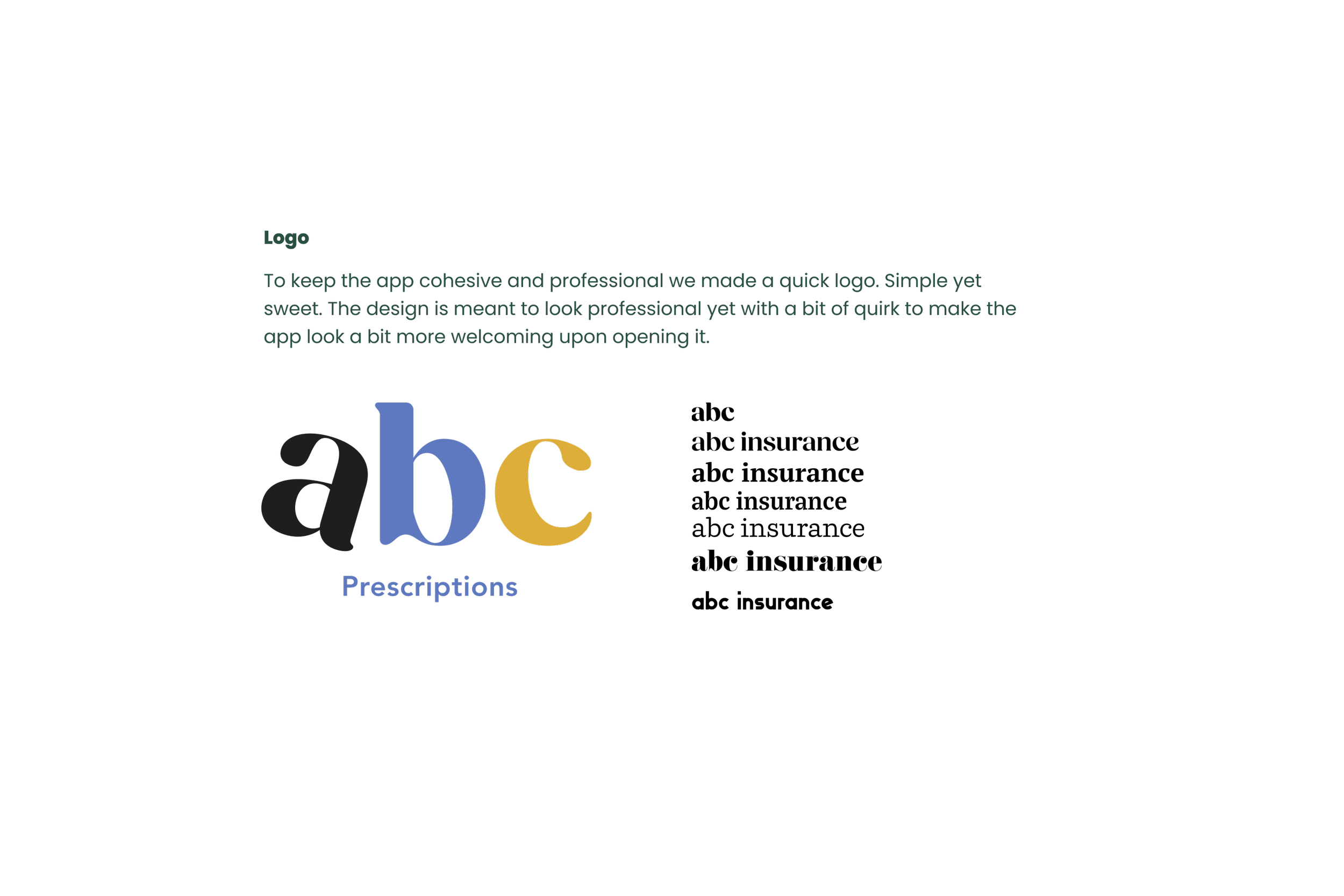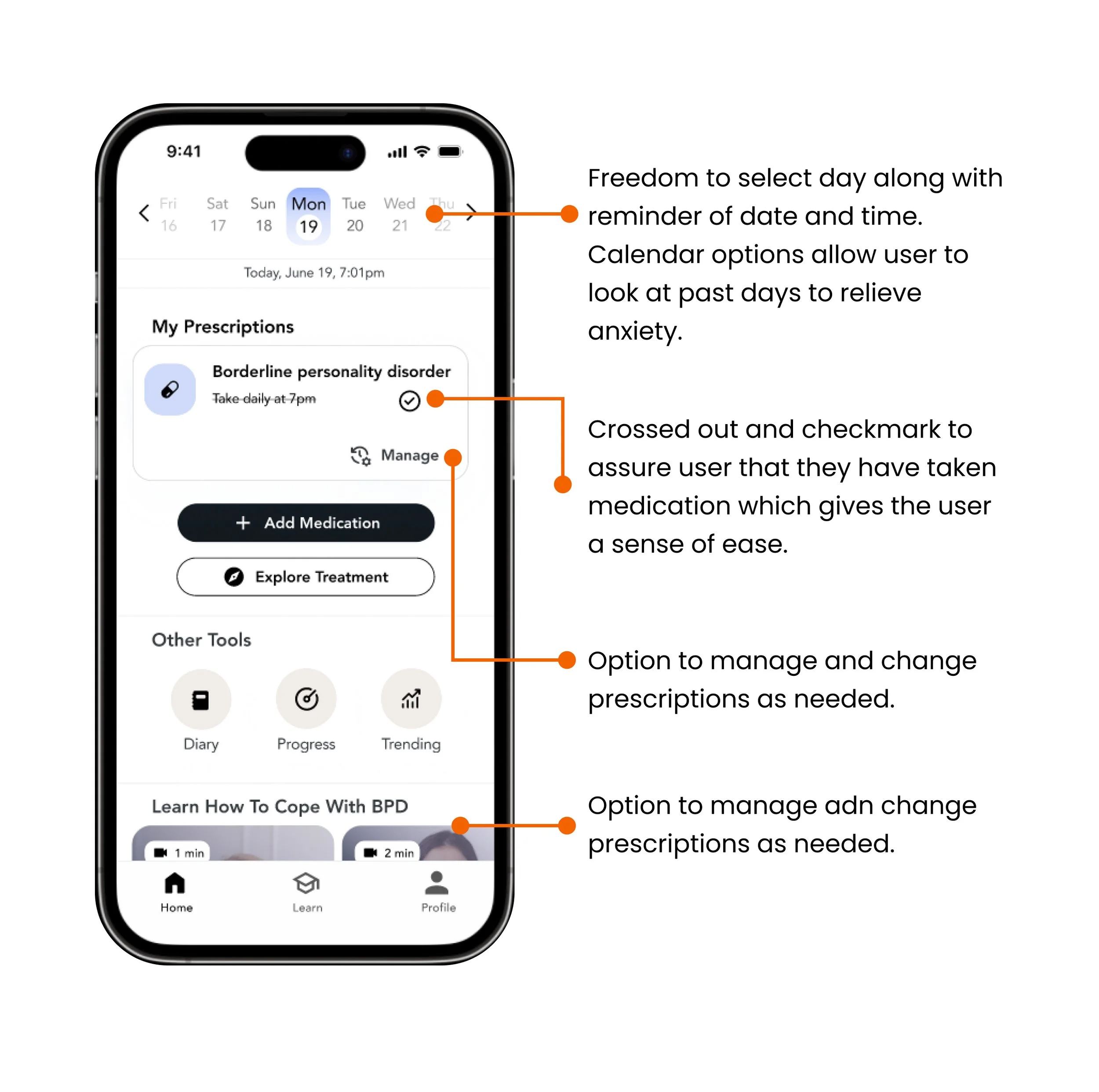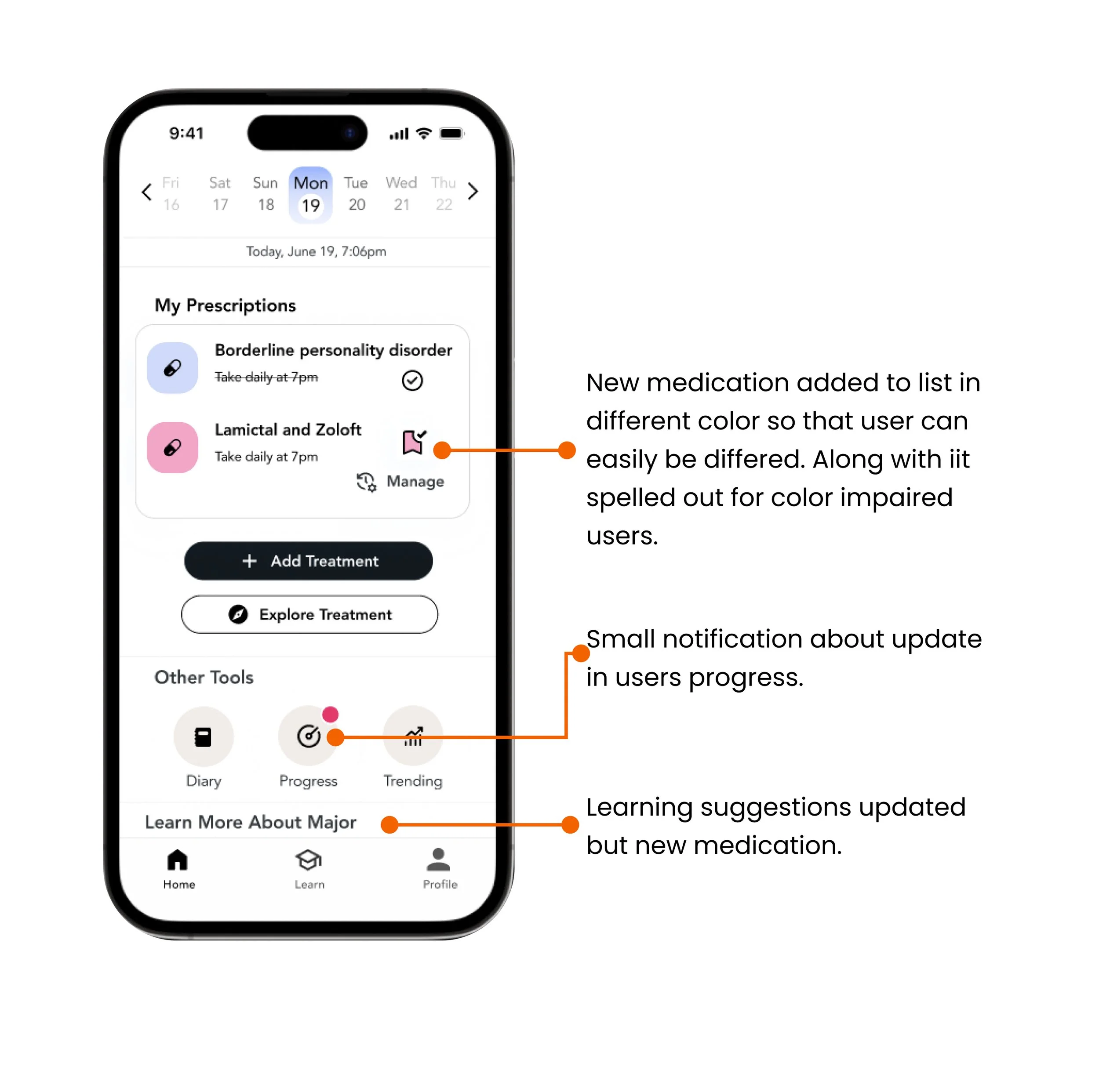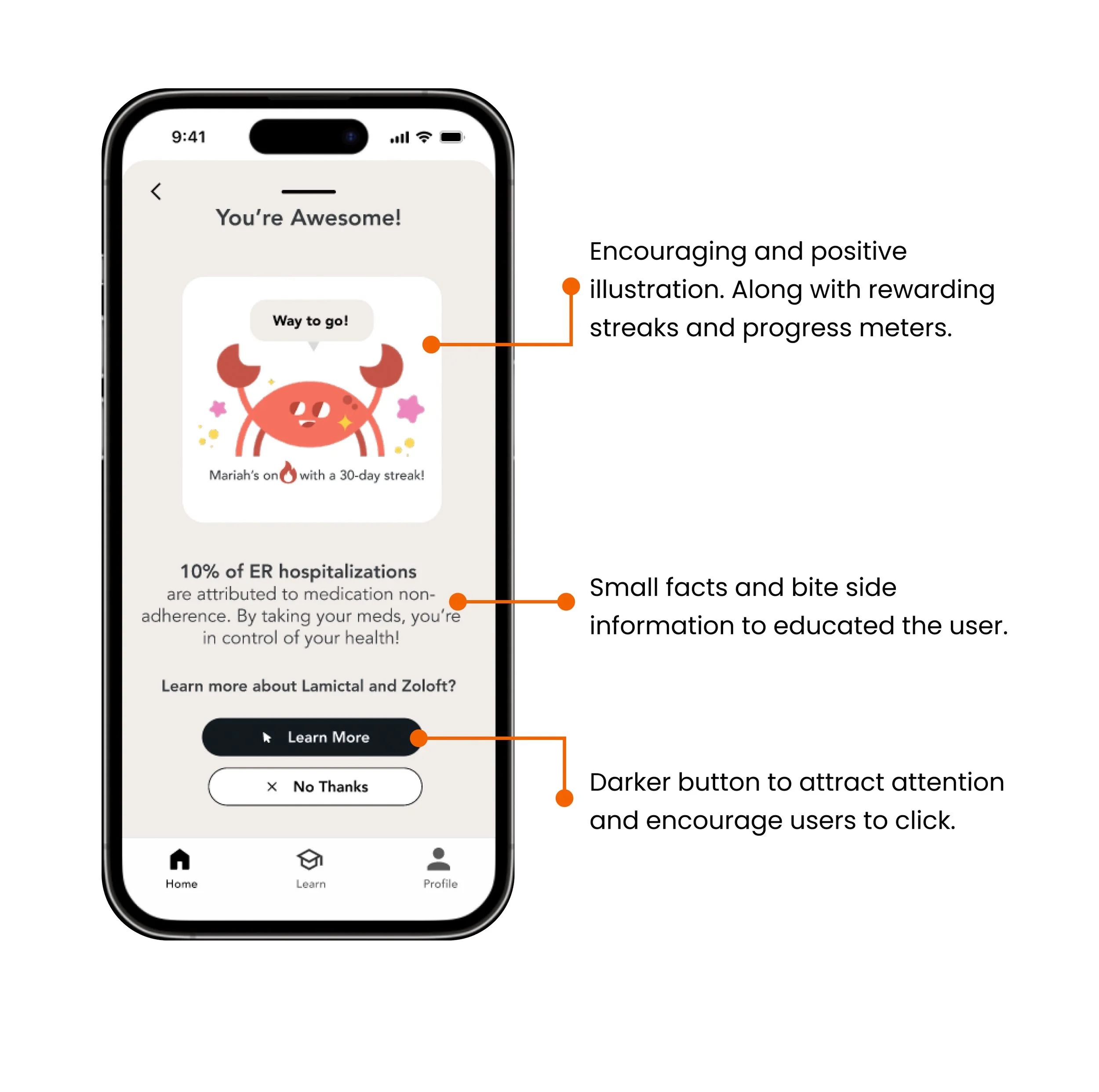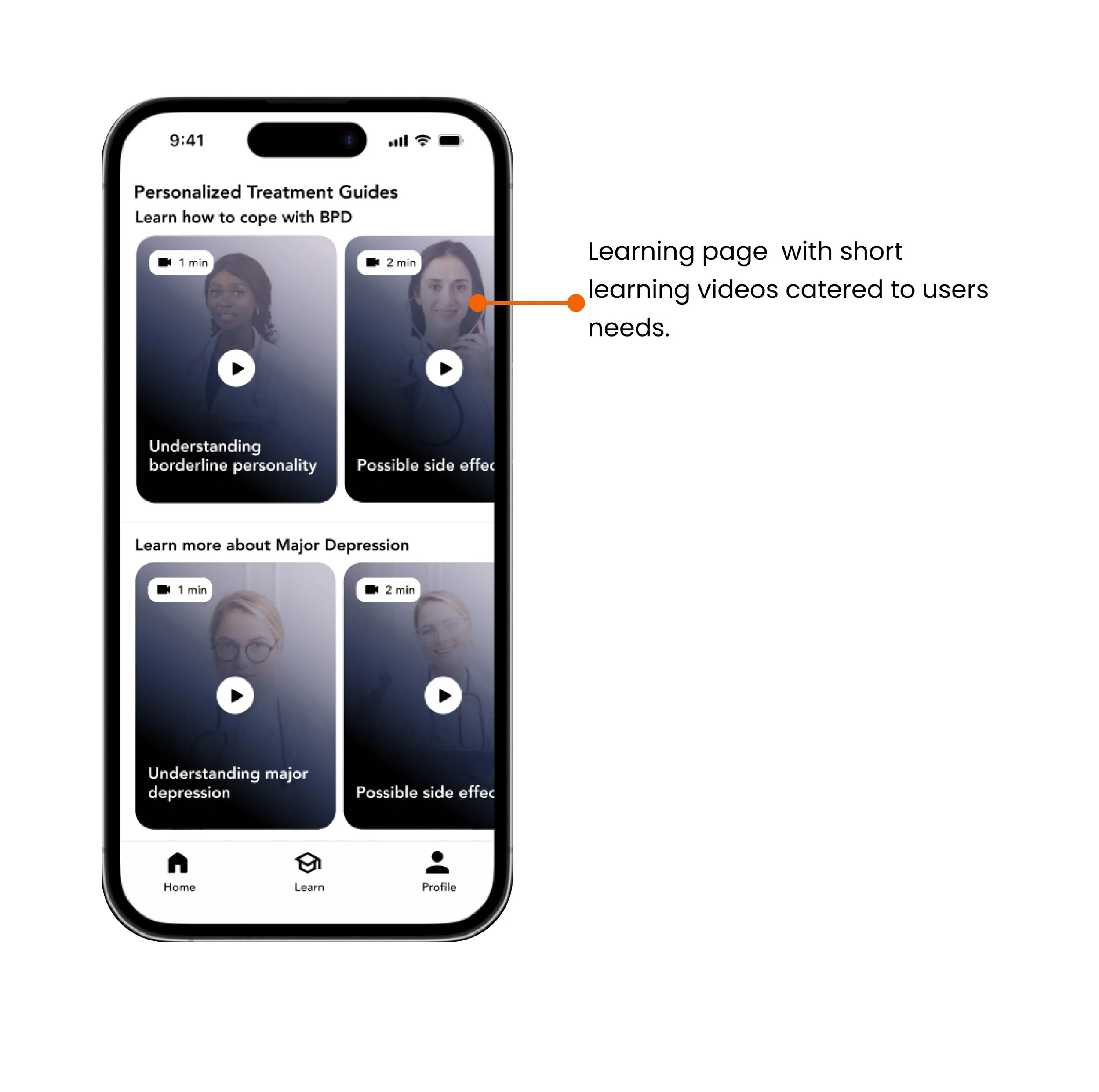
Home work
A 24 hr cross discipline project to develop a functional task flow beginning from ideation to a fully developed project for the fictional company ABC insurance. Tasked with the prescriptions division of this project we looked into making a direct to consumer platform that would assist users with medical adherence.
Tools: Figma, Adobe Illustrator, and Procreate.
Role: UX researcher, Ux Copy Writer, Brand Designer, and UI Designer
Constraints: 24 hour Collaborative Hackathon , Google Material Design.
The Team
We were assigned a team of two software engineers, two us designers and a data scientist.
The Prompt
Given 24hrs we were assigned to research, design, and code a working app for the fictional company ABC Insurance. While we were working on the prescriptions division of this app other teams were working on other decision of this app and company such as mental health and fitness. We were left open to decide what services and problems our app should solve with the one requirement of that it had to involve medications.
Brainstorming
First we started out with some brainstorming. Which was where we saw our first hiccup. Too many passionate people with too many great and passionate ideas. So my fellow UX designer and I introduced the group about our design process and we were on our way. After Brainstorming and some research we landed on the topic of Medical Non-Adherence.
Why does this matter?
About 50% of medications for chronic illnesses are not taken as prescribed. You may be thinking, well, not THAT many people can have chronic illnesses, so why is this important? In fact, half the American population, around 160 million people, have chronic illnesses and these account for over 90% of prescriptions. Three quarters of those medications are not being taken as prescribed. Furthermore, 70% of medication-related hospitalizations are attributed to medication non-adherence. Not only does medication non-adherence severely impact the quality of people’s lives, but there is also an immense economic cost to medication non-adherence.
Why Gen Z?
Why should we focus on Gen Z? About 20% of the population - or 70million Americans - are Gen Z. If we can increase both medication adherence and health literacy at an early age, the downstream impacts would be enormous. Additionally, one third of Gen Z actually trusts TikTok more than doctors, which makes medication adherence a difficulty. With almost 2/3 of Gen Z prescribed medication, the potential impact of our product could be astounding.
How might We?
we increase medication adherence through health literacy and positive reinforcement for Gen Z patients?
Persona- Meet Mariah
Keeping the Gen Z audience in mind and the economic losses of NOT adhering to medications, we crafted our more polished proto-persona, Mariah.
Maraih just turned 26 and has rolled off her mother’s insurance. She suffers from multiple mental health conditions and needs more accessible, intuitive, and encouraging ways to manage her health / make informed health decision
We grouped the user stories into different epics. Functional app features that could address Mariah’s wants and needs. We found that prescriptions was not only our biggest theme but matched up with our How might we sentence.
Task Flow
Moving on, we built a task flow that shows Mariah adding her newest prescription. This was important for us to build out as a team before we started the visual design process. After much edits and deliberation we decided the best flow to help Mariah and address the problem of medical adherence was to have her adding a new RX with rewards and learning options.
User Stories
We stepped into the shoes of Mariah to see what she would want in an app that will help her learn about her medication. This gave us a framework to start our design process.
You can see the stories in bold that we focused on.
Epics
Wire Frames
This was our first iteration of our design ideas. Due to the 24 hr constraints of this project we had to skip the sketching phase and immediately start working on wireframes.


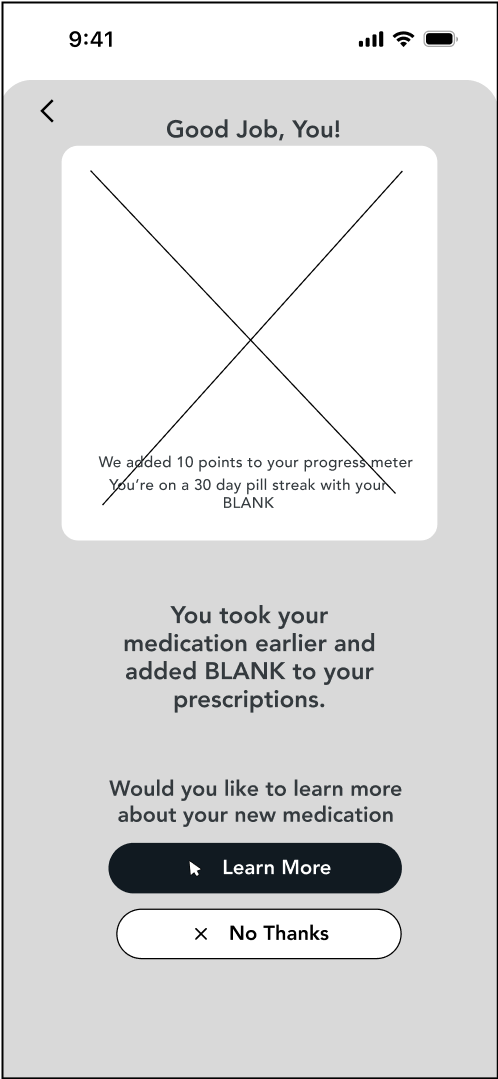

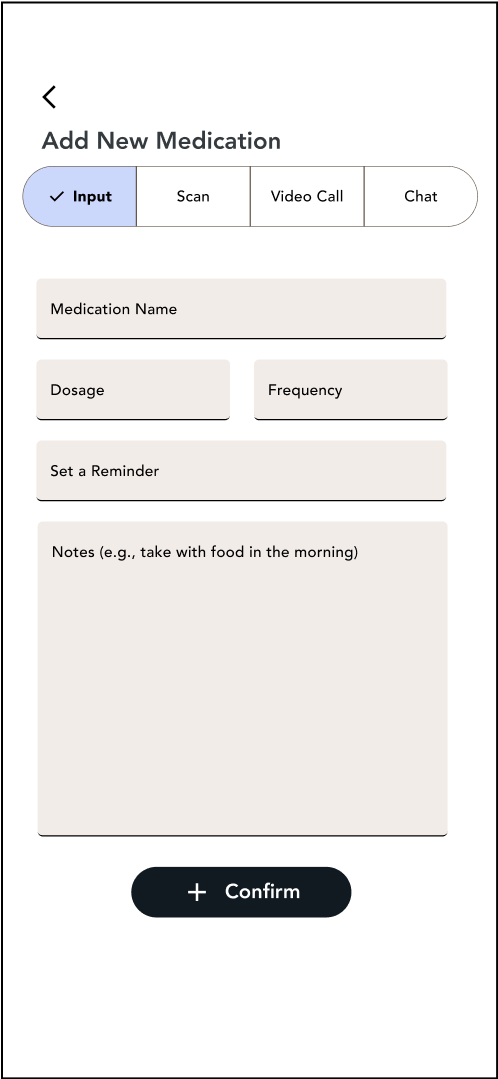

Let’s get Moody
We put together a mini mood board to guide us in the look and feel of the app. We wanted abc prescriptions to have a calm look with bit of brighter personality so the the app didn’t feel sterile to our young users .
Abc Prescriptions
Calm
Comforting
serene
accessible
helpful
medical
safe
efficient
sweet
friendly
The Prototype
Design Thinking
What’s the impact?
Now that we have made the product what can we predict to be the outcome? With improvement of medical adherence from the app we can see that medical adherence is estimated to go up by 25% which could save the economy $100 billion dollars a year. This of course could save ABC insurance billions as well. As well as keep their cutomers happy and healthy.
Improvements still to be made.
Like any design project there is still work to be done and improvements to be made. Some next steps I would like to take would be...
Building out the task flow.
Integrate more assistive technology
User testing and iteration
Data Storage and Privacy
Predictive Machine Learning Model
Key Learnings
The process Estimating Cross-discipline Level of Effort
Medication Non-Adherence- Social and Economic
Industry Terminology and Language
Team work and synergy
Thanks
Thanks
Like what you’re seeing?
Check out some more of my projects.
